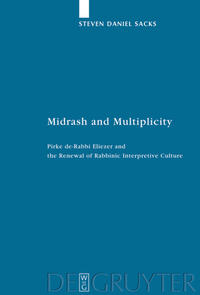
Pirke de-Rabbi Eliezer represents a late development in “midrash”, or classical rabbinic interpretation, that has enlightened, intrigued and frustrated scholars of Jewish culture for the past two centuries. Pirke de-Rabbi Eliezer’s challenge to scholarship includes such issues as the work’s authorship and authenticity, an asymmetrical literary structure as well as its ambiguous relationship with a variety of rabbinic, Islamic and Hellenistic works of interpretation. This cluster of issues has contributed to the confusion about the work’s structure, origins and identity. Midrash and Multiplicity addresses the problems raised by this equivocal work, and uses Pirke de-Rabbi Eliezer in order to assess the nature of “midrash”, and the renewal of Jewish interpretive culture, during its transition to the medieval era of the early “Geonim”.